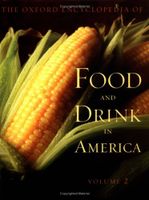Advertisement
Washington, D.C
Appears in
Published 2004
The nation’s capital, Washington, D.C., was founded in 1791. The city’s food culture is a complex blend of its roots in the historic Upper South, its role as a federal city, its place on the international stage, and its highly transitional demographic. Drawn to and fro by politics, government service, academia, immigration, and diplomacy, the people of Washington, D.C., have created a food culture that draws on their origins and speaks to their aspirations.
Washington has no singular cuisine but it does have a unique food culture. Much of the homegrown cuisine is southern. The federal city was built in part by the Chesapeake region’s reliance on tobacco and slavery and its dependence on slave labor. Blacks played a founding role in the city’s early cuisine—they were the cooks in many of the early taverns and served in the White House dating back to the Jefferson presidency. The planter class and the powerful influence of southern politicians made for the establishment of a segregated city through the early years of the Civil Rights movement. The establishment of Howard University and the draw of working as professionals and support staff for the federal government and academic and diplomatic institutions created an influx of blacks drawn from southern Maryland, Virginia, and the Carolinas who became the majority. Later black immigration from Ethiopia, Eritrea, Somalia, Ghana, Nigeria, and other parts of East and West Africa to Adams Morgan, U Street-Cardozo, and Shaw along with a smaller Caribbean population further added to the richness of the black community and its culinary establishments.


